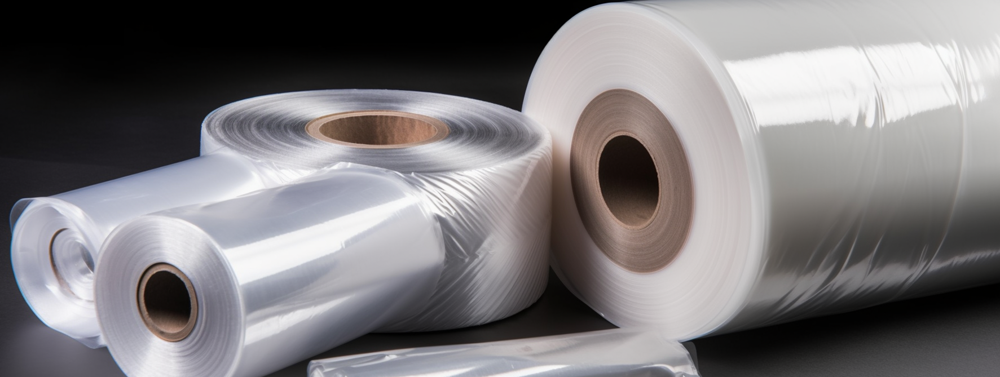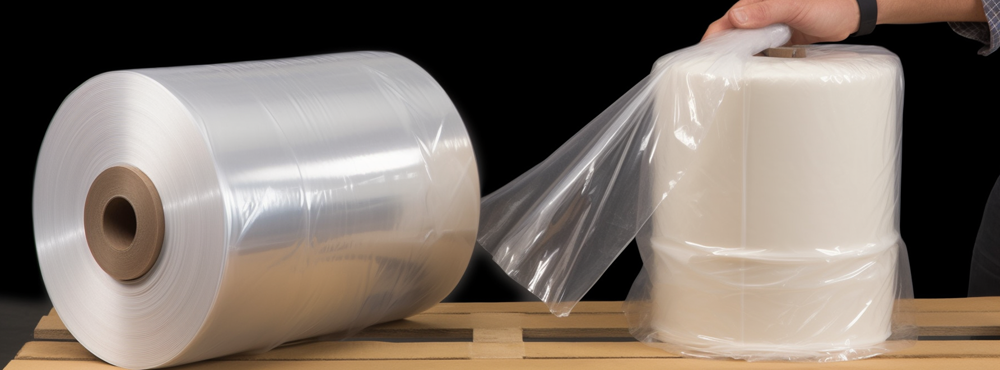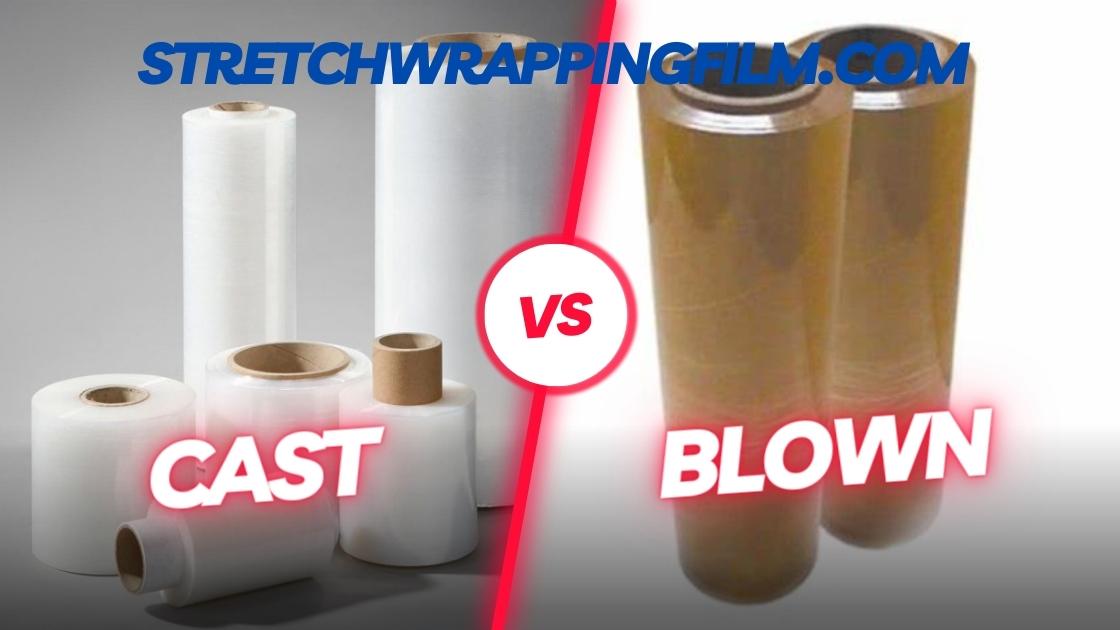Choosing the right stretch film is essential for secure and efficient packaging. By understanding the characteristics and advantages of cast and blown stretch film, considering cost implications, application suitability, environmental impact, and customer requirements, you can make an informed decision that ensures product protection and customer satisfaction.
Cast stretch film and blown stretch film are two popular options for packaging. Cast film is made through a process called cast extrusion, providing excellent clarity and quiet unwinding. Blown film, produced through blown film extrusion, offers superior puncture resistance and cling characteristics. The choice depends on factors like load containment, cost, application suitability, and environmental impact.

Dive deeper into the properties, performance, cost considerations, application suitability, environmental impact, and customer requirements to determine the best stretch film for your packaging needs.
Introduction
Stretch film plays a crucial role in various industries, providing a secure and protective wrapping for products during storage, transportation, and handling. When it comes to selecting the appropriate stretch film for your packaging needs, two popular options are cast stretch film and blown stretch film. Understanding the characteristics, advantages, and differences between these two types is essential for making an informed decision that meets your specific requirements.
Table 1: Comparison between Cast and Blown Stretch Film
| Properties | Cast Stretch Film | Blown Stretch Film |
|---|---|---|
| Clarity | High (clear and shiny) | Low (hazy and dull) |
| Tear Resistance | Low | High |
| Noise | Quiet when unwound | Noisy when unwound |
| Cost | More affordable | More expensive |
| Stretchability | Up to 250% | Up to 300% |
| Load Holding | Good | Excellent |
| Production Speed | Faster | Slower |
Understanding Cast Stretch Film
Cast stretch film is a widely used packaging material known for its versatility and cost-effectiveness. This type of film is manufactured through a process called cast extrusion. In this process, the resin is melted and extruded through a flat die, forming a thin film that is then cooled rapidly. The quick cooling helps retain the film’s clarity, which is one of its notable characteristics.
Cast stretch film offers several advantages:
- Clarity: Firstly, it has excellent clarity, allowing for easy product identification without compromising security.
- Quiet: Additionally, cast film is quiet when unwound, making it a preferred choice in noise-sensitive environments.
- Smooth texture: It also has a smooth texture, which facilitates the efficient movement of products during wrapping.
- Tear resistance: Furthermore, cast film has good tear resistance, ensuring that the film remains intact during transportation and handling.
Exploring Blown Stretch Film
Blown stretch film is another commonly used packaging material with its own set of unique characteristics. It is manufactured through the blown film extrusion process. In this process, the resin is melted and extruded through a circular die, forming a bubble of film that is then cooled and flattened.
Blown stretch film offers distinct advantages such as:
- Superior puncture resistance: It possesses superior puncture resistance, making it suitable for wrapping sharp-edged or irregularly shaped items.
- Strength and toughness: The film’s strength and toughness provide enhanced load containment, ensuring the stability and security of products.
- Higher cling: Blown film also has a higher cling characteristic, which allows it to adhere to itself more effectively, resulting in better pallet integrity.
Comparison of Properties and Performance
When comparing cast and blown stretch film, it’s essential to consider their physical properties and performance attributes.
- Cast stretch film: Cast stretch film generally has higher clarity and a smoother texture compared to blown film.
- Blown stretch film: On the other hand, blown stretch film tends to have greater puncture resistance and cling characteristics.

In terms of load containment and stability, both types of film perform well. Cast stretch film offers good load retention, ensuring products stay securely wrapped during transportation and storage. Blown stretch film excels in situations where there is a need for extra strength and resistance to punctures, making it suitable for heavy or sharp-edged loads.
Cost Considerations
Cost is a significant factor when choosing between cast and blown stretch film. Cast stretch film is typically less expensive due to its manufacturing process and lower material costs. However, blown stretch film’s superior strength and puncture resistance can result in lower film usage, potentially offsetting the higher upfront cost. It’s important to evaluate the specific application requirements and assess the overall cost-effectiveness of each film type.
Application Suitability
Ideal application for cast stretch film
The ideal application for cast stretch film is when clarity and quiet operation are critical. Industries such as retail, food and beverage, and electronics often prefer cast film due to its transparency and noise reduction properties. Cast film is suitable for light to medium loads that don’t have sharp edges.
Ideal application for Blown stretch film
Blown stretch film is well-suited for applications where load stability and puncture resistance are paramount. Industries such as construction, manufacturing, and agriculture commonly utilize blown film to secure heavy, bulky, or irregularly shaped loads. Blown film provides excellent protection against punctures and tears, making it ideal for challenging packaging scenarios.

Environmental Considerations
Considering the environmental impact of stretch film is crucial for sustainable packaging practices. Cast stretch film is generally more recyclable than blown film due to its lower thickness and better compatibility with recycling processes. However, both film types can be recycled, and it’s important to check local recycling facilities for their specific requirements.
Furthermore, advancements in technology have led to the development of eco-friendly stretch films that incorporate recycled materials or use bio-based resins. These sustainable alternatives can help reduce the environmental footprint associated with packaging materials.
Customer Requirements and Preferences
When choosing between cast and blown stretch film, it is essential to consider the specific requirements and preferences of your customers. Understanding their expectations regarding load stability, product visibility, and sustainability goals is crucial for selecting the most suitable film type. Collaborating and communicating with customers can provide valuable insights that enable you to make an informed decision and ensure customer satisfaction.

Conclusion
Selecting the right stretch film is vital for effectively securing and protecting your products during storage, transportation, and handling. By understanding the characteristics, advantages, and differences between cast and blown stretch film, you can make an informed decision that aligns with your specific packaging needs. Consider factors such as physical properties, performance attributes, cost implications, application suitability, environmental impact, and customer requirements to choose the stretch film option that best meets your packaging requirements.














